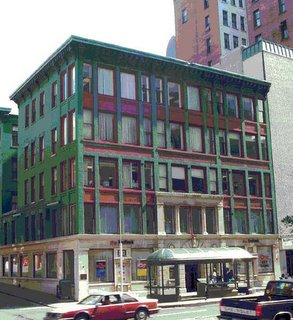Return Frederick Douglass to Prominence in Rochester
Rochester was the most important place in America for the early civil rights movement in this country. This is pretty much common knowledge to anyone who has ever lived in the Rochester area. We were among the most important points of the Underground Railroad, a key meeting place of abolitionists and suffragists, and a place where many firsts were achieved. However, it is as the home and final resting place of both Susan B. Anthony and Frederick Douglass, that the Flower City can stake its claim amongst America's great historic centers.While Susan B. Anthony has long had a worthy memorial at the Susan B. Anthony House on Madison Street, where is our memorial to Frederick Douglass? While Washington DC has the National Frederick Douglass Historic Site at Cedar Hill and Cincinnati has the National Underground Railroad Freedom Center, Rochester still has scant little to show for Mr. Douglass' achievements here and elsewhere. This must change, and soon. Today's Democrat & Chronicle has a story on two competing proposals to establish memorials to Douglass and the Underground Railroad. One proposal is the Frederick Douglass Resource Center, which would be built at a former steel fabricating plant on King Street not far from the Anthony House; the other is the Freedom Trail Interpretive Center at High Falls.
Both of these proposals have merit and I applaud their backers for their efforts to build facilities worthy of Rochester's heritage. But shouldn't they be combined into one single effort capable of creating something that would firmly establish Rochester as a center for cultural tourism? Shouldn't this facility be built at a prominent location to ensure its own success while also having an important economic spin-off for the city that Douglass loved so much? In my opinion, the competing efforts should be merged into the "North Star Museum of Civil Rights" that would be built at the Talman Building (see picture below) on Main Street in downtown Rochester.
 The Talman Building is where Frederick Douglass published his anti-slavery newspaper, The North Star, for 17 years. It is in a prominent location near the Four Corners and there is a large surface parking lot to its rear to accommodate school and tour buses. Although it is currently a fully-occupied 20,000 square foot Class B office building, I believe the conversion could be relatively easy since the building is well-maintained, its current owners are local, and there are not many tenants to displace. Besides, there is a ton of vacant Class B office space in downtown Rochester that could easily absorb these tenants. Personally, I'd be happy to show them around.
The Talman Building is where Frederick Douglass published his anti-slavery newspaper, The North Star, for 17 years. It is in a prominent location near the Four Corners and there is a large surface parking lot to its rear to accommodate school and tour buses. Although it is currently a fully-occupied 20,000 square foot Class B office building, I believe the conversion could be relatively easy since the building is well-maintained, its current owners are local, and there are not many tenants to displace. Besides, there is a ton of vacant Class B office space in downtown Rochester that could easily absorb these tenants. Personally, I'd be happy to show them around.
But wait, there's more! The above photo shows the Frederick Douglass Monument at Highland Park. This statue, the first government-commissioned statue to honor an African-American, was once located at the intersection of St Paul Street and Central Avenue in downtown Rochester (where the Inner Loop is now). Today, it is overlooked by residents and visitors alike due to its nearly invisible location off of South Avenue overlooking the Highland Bowl. This highly important monument must be returned to a prominent location in downtown Rochester. The legacy of Frederick Douglass must continue to be preserved and enhanced and what better place to do so than in his adopted hometown, our hometown.
Pictures from www.rochesterdowntown.com and Kathleen J. Eilers of RIT.